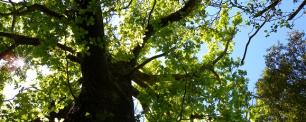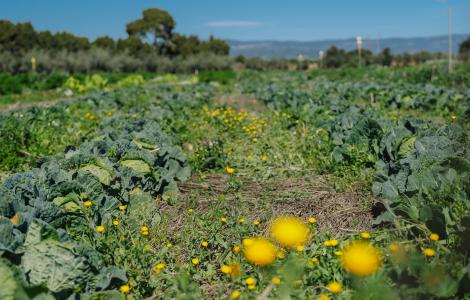A year of respite for Catalonia’s forests
With spring almost upon us, CREAF’s experts are reporting that this year could be a chance for Catalonia’s forests to recover from accumulated past droughts and the devastating effects of the pine processionary. There will be no let-up for the territory’s undergrowth, however, with the box tree moth’s continuing expansion leaving just 20% of box plants with new growth.

“Even the oak and holm oak woods affected by the severe droughts of 2012 and 2016 – 18,000 hectares in the former case and 11,000 in the latter – are recovering, owing to their trees being of the kind that sprout again spontaneously.”
“In 2019, a sudden heatwave in late June looked likely to spell trouble for the forests, but they were saved by the storms we had in August, and now the situation is fairly positive”, says CREAF ecologist Jordi Vayreda. “We’re finding that even the oak and holm oak woods affected by the severe droughts of 2016 and 2012 – 18,000 hectares in the former case and 11,000 in the latter – are recovering, owing to their trees being of the kind that sprout again spontaneously.” According to Vayreda, this shows that Catalonia’s forests remain resilient despite the extreme weather events climate change entails. “Two or three summer downpours can see them through the whole season”, he remarks.
The citizen science platform Alerta Forestal records pine processionary sightings throughout Catalonia. The territory’s pine trees appear to be in for a year of respite too, after being seriously and repeatedly affected for four consecutive years. “While the number of registered users we have has risen to almost 1,300, reports of processionary sightings have fallen substantially, probably because the infestation has been stabilized by the insect’s natural foes”, states CREAF researcher Anabel Sánchez, Alerta Forestal’s technical coordinator. That was only to be expected, “as the processionary is an autochthonous species of moth that is naturally regulated within the ecosystem”, she explains. “The aberration was the repeated, large-scale defoliations of the last four years, and we’ll need to study their causes carefully.”

The box tree moth continues its offensive
While Catalonia’s forests may be doing well, its box thickets are not. Cydalima perspectalis, known as the box tree moth because its larvae feed voraciously on the shrub in question, remains a cause of great concern.
“Only 20% of the box plants have new growth and they’re all infested with caterpillars… The shrub’s future doesn’t look bright.”
“At first glance, there seem to be fewer Cydalima moths around this year”, says Jordi Riera, director of the Guilleries-Savassona Nature Area in Osona. “We went from 5,700 captures per trap in 2018, when the infestation was at its peak, to just 1,000 in 2019”, he adds. As he points out, however, closer inspection paints a truer picture of what is happening. “Only 20% of the box plants have new growth and they’re all infested with caterpillars… The shrub’s future doesn’t look bright.”

All forest infestations involve a cycle similar to that of the box tree moth, i.e. a first year in which vegetation is not overly affected, as the insect involved (which may or may not be an invasive species) is new to the forest and needs to adapt; a second year in which there is an explosion in the population of the insect, which has abundant food available and devastates large areas of forest; and a third year in which there is a reduction in the infestation, due to there being less food available and the insect’s natural adversaries regulating its population size. “In the case of the box tree moth, 2020 is clearly a post-invasion year in La Garrotxa, with fewer moths around because there are hardly any box plants left for them to feed on”, explains Emili Bassols, who works in La Garrotxa Natural Park. Here too, it is now that complications are arising, with the few box plants that do have new shoots coming under attack once again. Measures for their recovery may prove insufficient.
Having firstly seriously affected La Garrotxa and Osona, the plague of box tree moths is now beginning to have a major impact in Ripollès, Lluçanès and Berguedà.
The plague of box tree moths is not just still active but actually expanding. aving firstly seriously affected La Garrotxa in 2017 and Osona in 2018 and 2019, it is now beginning to have a major impact in Ripollès, in Lluçanès and close to the boundaries of Berguedà. “Cydalima is like an oil stain, it starts in one part of a territory and spreads”, concludes Bassols.







